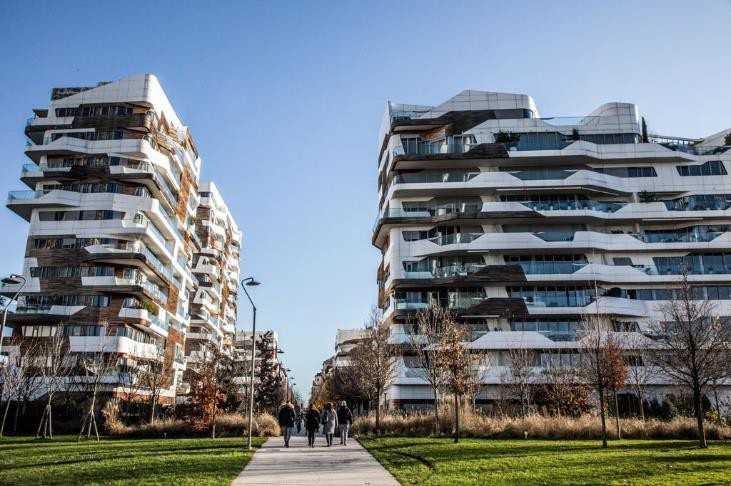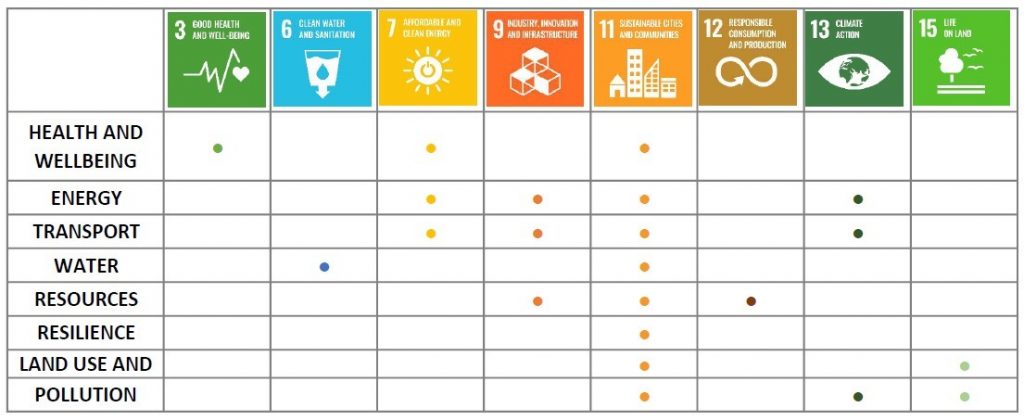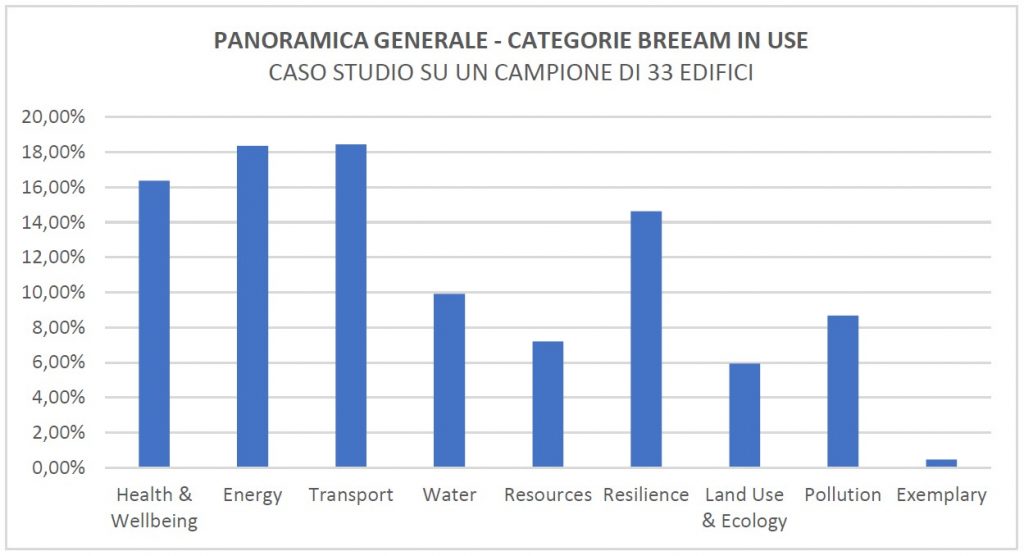AUTHOR: Antonella Contestabile
TUTORS: Ing. Alessandro Zichi
INTERNSHIP: Greenwich S.r.l.
MASTER: Master in “Sustainability and energy management in construction works” a.a 2021/22
Negli ultimi decenni, la sostenibilità è diventata un tema centrale nel mondo degli affari e della finanza. Ciò è dovuto alla crescente consapevolezza dei danni ambientali causati dallo sviluppo economico non sostenibile e alla necessità di garantire la continuità delle attività economiche a lungo termine. L’idea alla base della sostenibilità è quella di trovare un equilibrio tra i bisogni economici, sociali e ambientali, in modo che tutte le parti coinvolte possano trarne beneficio.
Oggi, molte aziende hanno incorporato la sostenibilità nella loro strategia aziendale. Ciò significa che stanno prendendo in considerazione gli impatti ambientali e sociali delle loro attività cercando di minimizzarli. Ciò non solo fa bene all’ambiente e alla società, ma può anche essere vantaggioso dal punto di vista finanziario. Le aziende che adottano pratiche sostenibili possono ridurre i costi a lungo termine, aumentare l’efficienza e migliorare la reputazione dell’azienda. Inoltre, sempre più investitori stanno scegliendo di investire in aziende che adottano pratiche sostenibili, poiché sono considerate meno rischiose e più responsabili.
In sintesi, la sostenibilità sta diventando sempre più importante nel mondo degli affari e della finanza. Le aziende che adottano pratiche sostenibili possono godere di numerosi vantaggi e la sostenibilità non è solo una questione etica, ma anche un’opportunità di business e di investimento a lungo termine.
In questo contesto, il settore immobiliare rappresenta un importante ambito di intervento per la riduzione dell’impatto ambientale, grazie alla sua capacità di influire sulla qualità della vita delle persone e sull’ambiente circostante.
Questa tesi si propone di esplorare il Real Estate Green Market e l’applicazione del protocollo BREEAM In Use per la valutazione dell’impatto ambientale sui fondi di investimento immobiliare in linea con i criteri ESG (Environmental, Social, Governance). L’obiettivo principale è quello di fornire una panoramica sui criteri di valutazione e le best practices utilizzate nel Real Estate Green Market, concentrandosi sull’applicazione del protocollo BREEAM In Use per valutare l’impatto ambientale dei fondi di investimento immobiliare.
La tesi prevede una revisione della letteratura esistente sui temi della sostenibilità ambientale nel settore immobiliare, della tassonomia verde e degli investimenti ESG, nonché una valutazione dei dati disponibili sulle prestazioni ambientali dei fondi immobiliari. La seconda fase della ricerca prevede una valutazione dei dati raccolti durante la mia esperienza lavorativa, sulle prestazioni ambientali dei fondi immobiliari.
In particolare, verranno analizzati i dati relativi alle prestazioni energetiche, alle emissioni di CO2 e ai consumi idrici dei fondi di investimento immobiliare, oltre che alla qualità dell’aria e dell’illuminazione negli ambienti indoor, l’impatto ecologico, la qualità e varietà dei servizi, il livello di inclusività, la posizione dell’edificio, in relazione anche alle modalità di trasporto alternative e infine la gestione dei rifiuti.
La metodologia utilizzata prevede lo studio di casi concreti di applicazione del protocollo BREEAM In Use su fondi di investimento immobiliare, al fine di valutare la sua effettiva efficacia nel fornire una valutazione dell’impatto ambientale.
I risultati della ricerca dimostreranno che l’applicazione del sistema di valutazione ambientale BREEAM In-Use nel settore immobiliare può portare numerosi benefici, sia in termini di sostenibilità ambientale che di risparmi economici per i proprietari degli edifici.
In primo luogo, possiamo affermare che il sistema BREEAM In-Use consente di valutare le prestazioni ambientali degli edifici già esistenti, consentendo di identificare eventuali punti deboli e aree di miglioramento per ridurre l’impatto ambientale dell’edificio, oltre che migliorare la reputazione e la visibilità dell’immobile sul mercato, in quanto sempre più aziende e consumatori sono alla ricerca di edifici sostenibili. Su queste basi, un edificio valutato positivamente dal sistema BREEAM In-Use può diventare un punto di riferimento nel mercato immobiliare, attirando inquilini e acquirenti interessati a un ambiente sano e sostenibile.
In secondo luogo, l’implementazione di pratiche sostenibili negli edifici può portare a significativi risparmi economici per i proprietari degli edifici, attraverso una riduzione dei costi operativi.
Infine, la valutazione BREEAM In-Use può aiutare i proprietari degli edifici a mantenere e migliorare il valore del loro investimento immobiliare a lungo termine, attraverso la gestione sostenibile dell’immobile e la promozione di un ambiente sano e sostenibile.
FOR INTERNATIONAL STUDENTS:
In recent decades, sustainability has become a central theme in the business and finance world. This is due to the increasing awareness of environmental damage caused by unsustainable economic development and the need to ensure the continuity of long-term economic activities. The idea behind sustainability is to find a balance between economic, social, and environmental needs, so that all involved parties can benefit.
Today, many companies have incorporated sustainability into their business strategy. This means that they are considering the environmental and social impacts of their activities and trying to minimize them. This not only benefits the environment and society but can also be financially advantageous.
Companies that adopt sustainable practices can reduce long-term costs, increase efficiency, and improve the company’s reputation. Additionally, more and more investors are choosing to invest in companies that adopt sustainable practices as they are considered less risky and more responsible.
In summary, sustainability is becoming increasingly important in the business and finance world. Companies that adopt sustainable practices can enjoy numerous benefits, and sustainability is not just an ethical issue but also a long-term business and investment opportunity. In this context, the real estate sector represents an important area for reducing environmental impact, thanks to its ability to influence the quality of life of people and the surrounding environment. This thesis aims to explore the Real Estate Green Market and the application of the BREEAM In Use protocol for assessing the environmental impact of real estate investment funds in line with Environmental, Social, Governance (ESG) criteria. The main objective is to provide an overview of the assessment criteria and best practices used in the Real Estate Green Market, focusing on the application of the BREEAM In Use protocol to evaluate the environmental impact of real estate investment funds.
The thesis includes a review of existing literature on environmental sustainability in the real estate sector, green taxonomy, and ESG investments, as well as an evaluation of available data on the environmental performance of real estate funds. The second phase of the research involves assessing the data collected during my work experience on the environmental performance of real estate funds.
In particular, data relating to the energy performance, CO2 emissions, and water consumption of real estate investment funds will be analyzed, as well as indoor air and lighting quality, ecological impact, quality and variety of services, level of inclusivity, building location, also in relation to alternative transportation methods, and waste management. The methodology used involves the study of concrete cases of application of the BREEAM In-Use protocol to real estate investment funds, in order to evaluate its actual effectiveness in providing an assessment of the environmental impact.
The results of the research will demonstrate that the application of the BREEAM In-Use environmental assessment system in the real estate sector can bring numerous benefits, both in terms of environmental sustainability and economic savings for building owners.
Firstly, we can affirm that the BREEAM In-Use system allows for the evaluation of the environmental performance of existing buildings, identifying any weaknesses and areas for improvement to reduce the building’s environmental impact, as well as improve the reputation and visibility of the property in the market, as more and more companies and consumers are looking for sustainable buildings. On these grounds, a building that is positively evaluated by the BREEAM In-Use system can become a reference point in the real estate market, attracting tenants and buyers interested in a healthy and sustainable environment.
Secondly, the implementation of sustainable practices in buildings can lead to significant economic savings for building owners, through a reduction in operating costs.
Finally, the BREEAM In-Use assessment can help building owners maintain and improve the value of their long-term real estate investment, through sustainable building management and the promotion of a healthy and sustainable environment.



